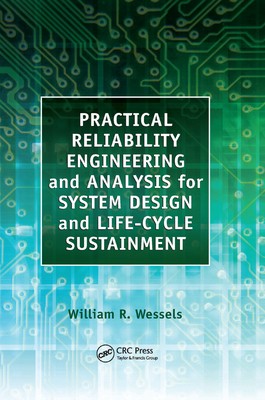
- We will send in 10–14 business days.
- Author: William Wessels
- Publisher: CRC Press
- ISBN-10: 0367384256
- ISBN-13: 9780367384258
- Format: 15.5 x 23.1 x 2.8 cm, softcover
- Language: English
- SAVE -10% with code: EXTRA
Practical Reliability Engineering and Analysis for System Design and Life-Cycle Sustainment (e-book) (used book) | bookbook.eu
Reviews
Description
In today's sophisticated world, reliability stands as the ultimate arbiter of quality. An understanding of reliability and the ultimate compromise of failure is essential for determining the value of most modern products and absolutely critical to others, large or small. Whether lives are dependent on the performance of a heat shield or a chip in a lab, random failure is never an acceptable outcome.
Written for practicing engineers, Practical Reliability Engineering and Analysis for System Design and Life-Cycle Sustainment departs from the mainstream approach for time to failure-based reliability engineering and analysis. The book employs a far more analytical approach than those textbooks that rely on exponential probability distribution to characterize failure. Instead, the author, who has been a reliability engineer since 1970, focuses on those probability distributions that more accurately describe the true behavior of failure. He emphasizes failure that results from wear, while considering systems, the individual components within those systems, and the environmental forces exerted on them.Dependable Products Are No Accident: A Clear Path to the Creation of Consistently Reliable Products
Taking a step-by-step approach that is augmented with current tables to configure wear, load, distribution, and other essential factors, this book explores design elements required for reliability and dependable systems integration and sustainment. It then discusses failure mechanisms, modes, and effects--as well as operator awareness and participation--and also delves into reliability failure modeling based on time-to-failure data considering a variety of approaches.
EXTRA 10 % discount with code: EXTRA
The promotion ends in 16d.03:26:38
The discount code is valid when purchasing from 10 €. Discounts do not stack.
- Author: William Wessels
- Publisher: CRC Press
- ISBN-10: 0367384256
- ISBN-13: 9780367384258
- Format: 15.5 x 23.1 x 2.8 cm, softcover
- Language: English English
In today's sophisticated world, reliability stands as the ultimate arbiter of quality. An understanding of reliability and the ultimate compromise of failure is essential for determining the value of most modern products and absolutely critical to others, large or small. Whether lives are dependent on the performance of a heat shield or a chip in a lab, random failure is never an acceptable outcome.
Written for practicing engineers, Practical Reliability Engineering and Analysis for System Design and Life-Cycle Sustainment departs from the mainstream approach for time to failure-based reliability engineering and analysis. The book employs a far more analytical approach than those textbooks that rely on exponential probability distribution to characterize failure. Instead, the author, who has been a reliability engineer since 1970, focuses on those probability distributions that more accurately describe the true behavior of failure. He emphasizes failure that results from wear, while considering systems, the individual components within those systems, and the environmental forces exerted on them.Dependable Products Are No Accident: A Clear Path to the Creation of Consistently Reliable Products
Taking a step-by-step approach that is augmented with current tables to configure wear, load, distribution, and other essential factors, this book explores design elements required for reliability and dependable systems integration and sustainment. It then discusses failure mechanisms, modes, and effects--as well as operator awareness and participation--and also delves into reliability failure modeling based on time-to-failure data considering a variety of approaches.


Reviews